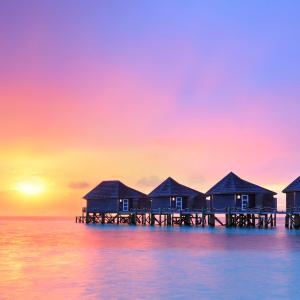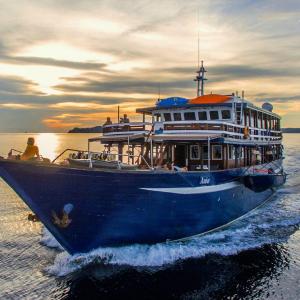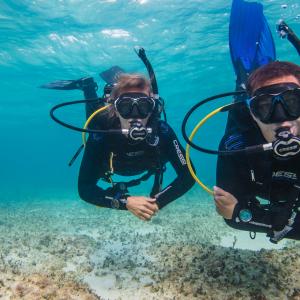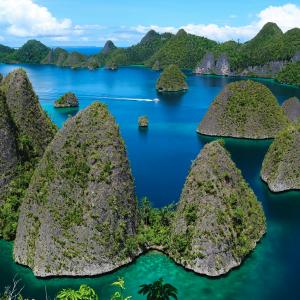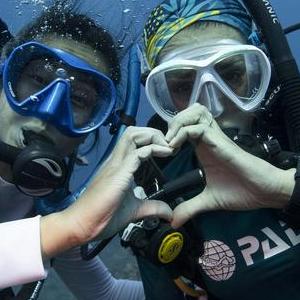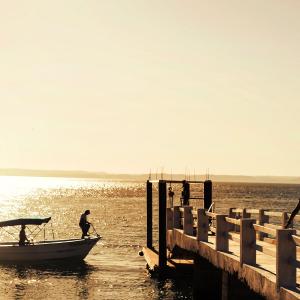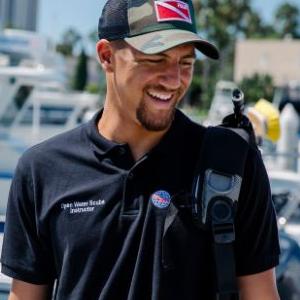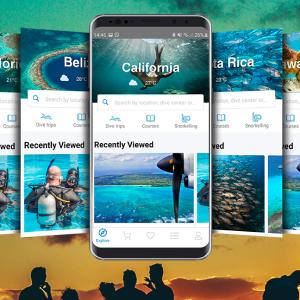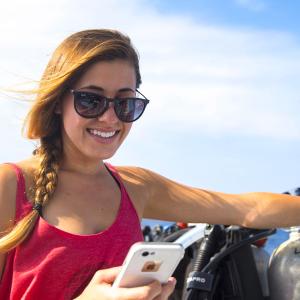The PADI Story – Two Friends and an Idea
The world’s largest scuba diving organization, PADI® was dreamed up in 1966 by two friends in Illinois over a bottle of Johnnie Walker. It’s true. John Cronin, a scuba equipment salesman for U.S. Divers, and Ralph Erickson, an educator and swimming instructor, were concerned about the scuba diving industry. They felt the scuba certification agencies that existed at the time were unprofessional, didn’t use state-of-the-art instruction and made it unnecessarily difficult for people to enter the sport. John and Ralph knew there had to be a safer, easier way for people to learn to breathe underwater.
In 1966, John brought a bottle of Johnnie Walker Black Label and $30 US to Ralph’s Illinois apartment in Morton Grove. They decided it was time to start a scuba training organization. John insisted the word “professional” be in the name of the company. Ralph wanted an “association of diving instructors.” After a few rounds of scotch, the acronym PADI was born: Professional Association of Diving Instructors. Their goal: Give more people a chance to enjoy the underwater world by offering relevant, instructionally valid scuba diving training to create confident scuba divers who dive regularly.
The Underground Office
The initial start-up meetings took place at several restaurants in Morton Grove and Niles, Illinois. In a few months, Cronin re-finished a portion of the basement in his home on Main Street in Niles to become the headquarters for PADI. He eventually hired his next door neighbor to be a part time secretary. His son, Brian, stuffed and sealed envelopes.
A Torched Logo
When they were struggling for a logo design, John mentioned he wanted something classy like the National Geographic look. Years later in an interview, Ralph said that idea changed the way he was looking at this small two-man operation. At that moment, he could see a big vision for PADI. Ralph was responsible for putting together the first PADI logo: a diver with a torch, in a globe. This logo was later refined into the well-known PADI logo of today.
PADI Grows
In the early years, PADI grew slowly. In 1967, PADI introduced recreational diving’s first diver certification requirements, first advanced diver course and first specialty diver programs. By the late 1960s, PADI had 400 members but it was still a struggling entity. Cronin went to a huge National Sporting Goods Association show in New York City. There he met with Paul Tzimoulis, who later became the editor of Skin Diver magazine. Paul suggested that PADI put the diver’s picture on the certification card. In 1968, PADI produced the first positive identification certification (PIC) card with the diver’s photograph. It was a strategic move that helped PADI’s eventual global recognition. Cronin had been promoted to Sales Manager at U.S. Divers and had moved the family to Huntington Beach, California.
In 1970, the PADI Office moved to California. Erickson developed a modular training program and it started to catch on. In 1972, the PADI Open Water Diver certification was launched as the preferred entry level rating, with twice as many required open water dives as previous courses. In the late 1970s and early ‘80s, PADI began creating its own integrated, multimedia student and instructor educational materials for each course. This development spawned an incredible growth period for PADI and made it unique from other agencies.
By the late 1980s PADI had become the leading scuba diving training organization in the world. With so many new people introduced to the activity, everyone at PADI felt a responsibility to teach divers about their interactions with the underwater world. Cronin knew PADI had a responsibility to protect the marine environment. Out of a true concern for the environment, the PADI AWARE Foundation was formed. John Cronin said:
We want to feel that our children, their children and generations to come will be able to enjoy the underwater world that has given us so much. There are so many significant problems facing mankind, but as divers this is truly our cause. If scuba divers do not take an active role in preserving the aquatic realm, who will?
In 2003, John Cronin passed away. His friend and PADI co-founder, Ralph Erickson, passed away three years later. They proudly carried PADI’s torch for many years before they confidently put it in the hands of today’s generation of PADI Professionals, who continue to introduce the world to scuba diving.
In 2016, PADI celebrated its 50th anniversary and re-affirmed its long-standing commitment to the health of the ocean planet. Carrying forward Cronin’s legacy of environmental stewardship, PADI resolved to activate a deeper purpose to be a force for good throughout its global network of divers and dive professionals. While remaining committed to safe and responsible diver education, PADI aims to make a significant impact on key issues facing the dive industry – and the entire planet – by empowering divers with information and tangible actions to support global efforts that drive positive social and environmental change.
PADI Today
The PADI Experience has continued to expand over the years, now including PADI Learning℠, PADI ClubTM, PADI GearTM and PADI Travel®. In 2019, the PADI organization evolved its tagline accordingly, from The Way The World Learns To Dive® to Seek Adventure. Save the Ocean.℠ PADI's mission and vision were also refined to what they are today.
Mission
Create a billion torchbearers to explore and protect the ocean.
Vision
Achieve balance between humanity and ocean.
With a diverse group of employees in PADI corporate offices around the world, the PADI organization works hard to be the best partner to its members and is committed to:
- Diver Safety and Education
- Underwater Adventure and Exploration
- Community
- Conservation
Led by Dr. Drew Richardson, President and CEO, the PADI Worldwide Executive team ensures these promises are met.

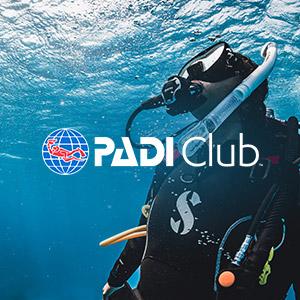
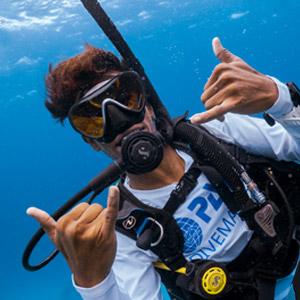

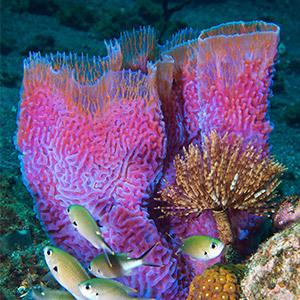
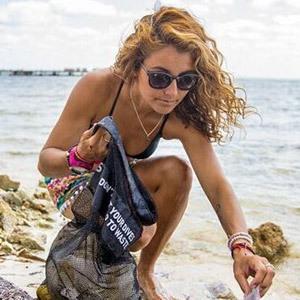

 Marine Debris
Marine Debris
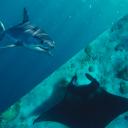 Shark & Ray Protection
Shark & Ray Protection
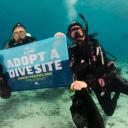 Adopt The Blue
Adopt The Blue
